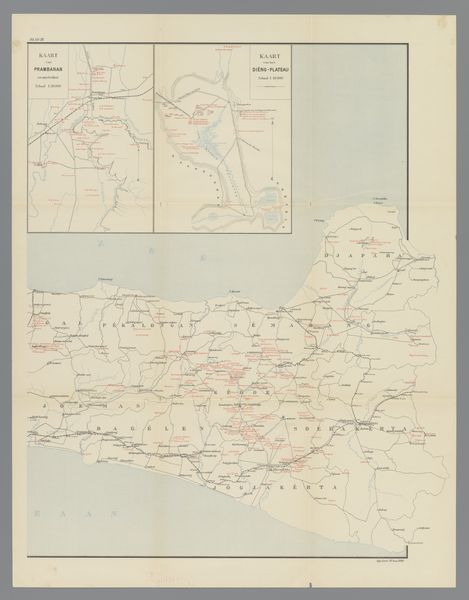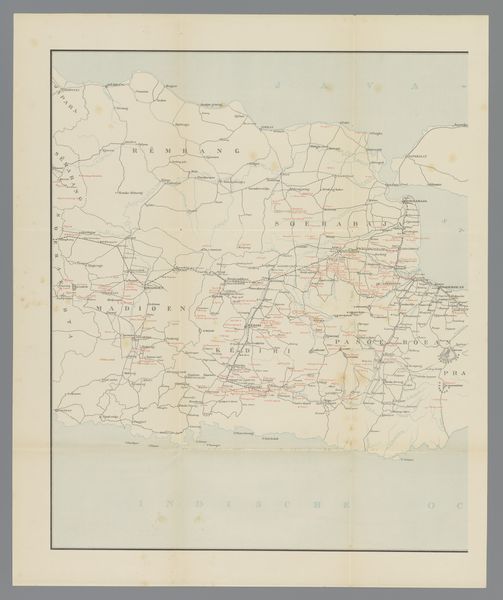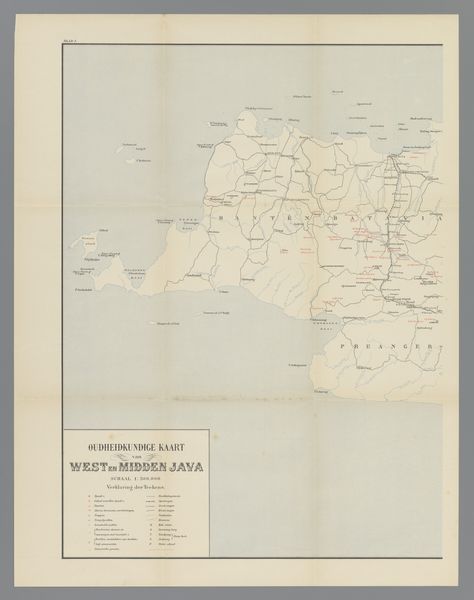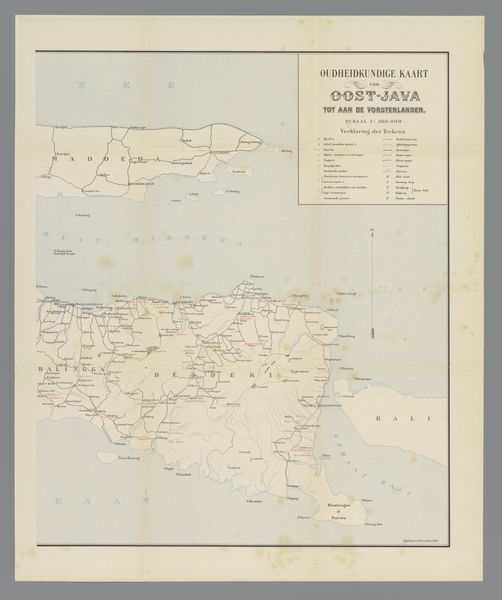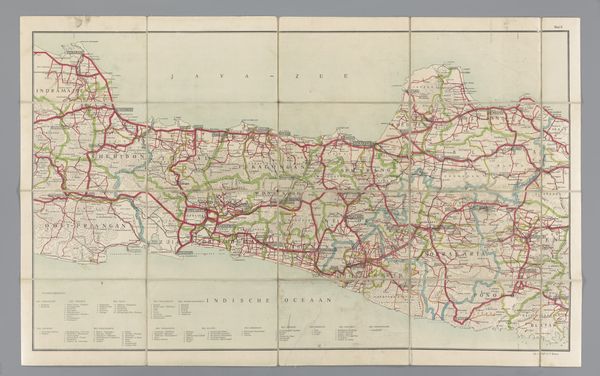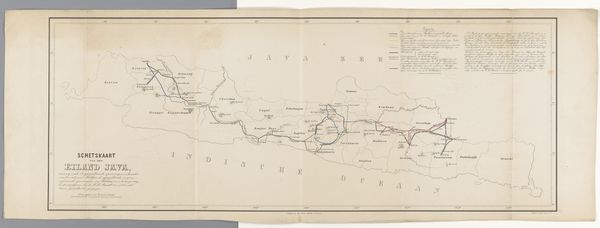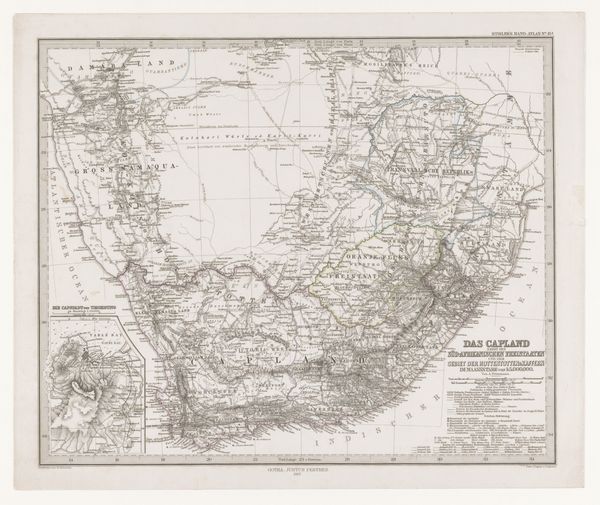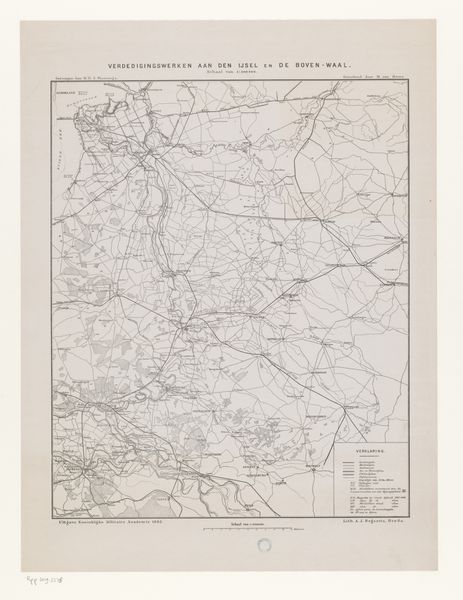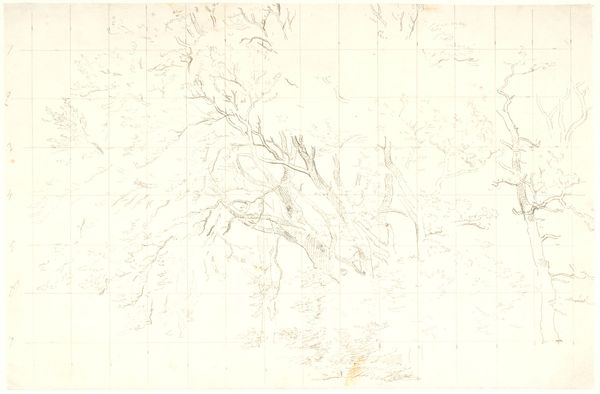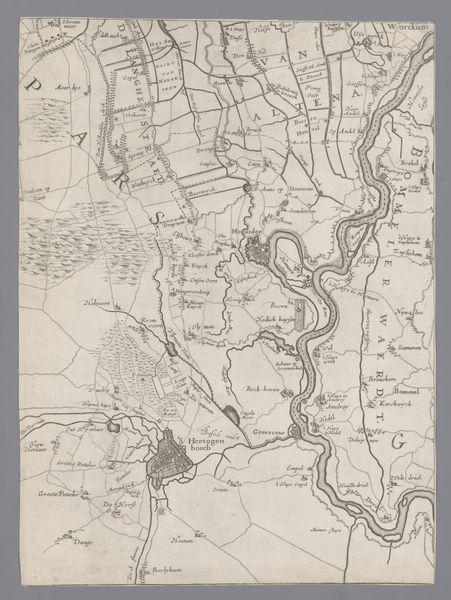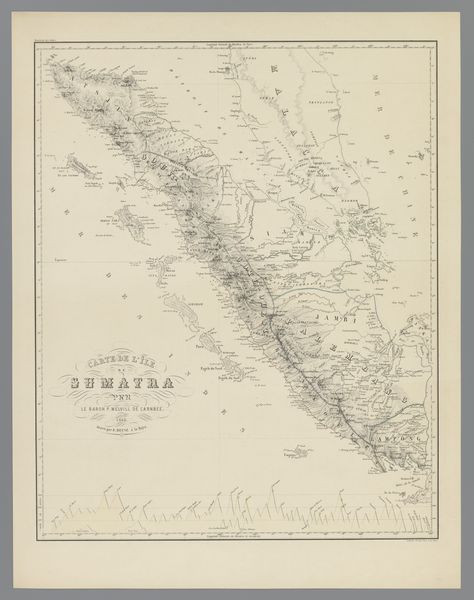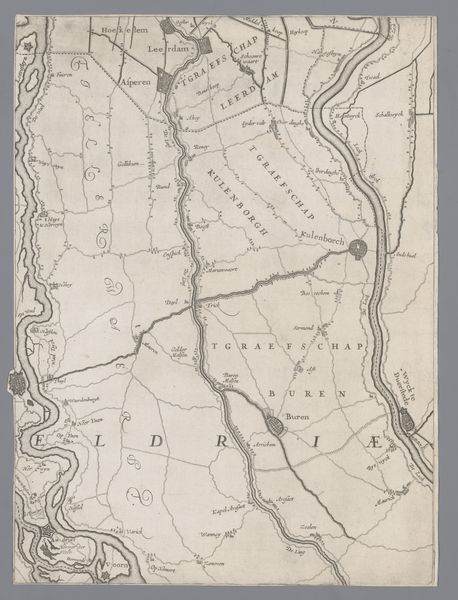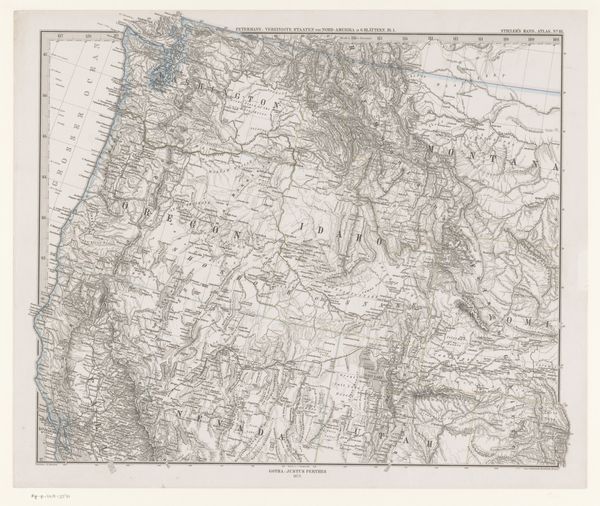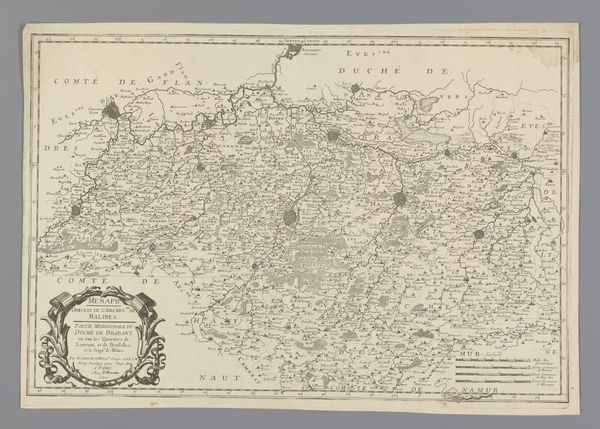
graphic-art, print, paper
#
graphic-art
# print
#
landscape
#
paper
#
geometric
#
orientalism
Dimensions: height 672 mm, width 523 mm
Copyright: Rijks Museum: Open Domain
Editor: This is "Kaart van west en midden Java, middelste deel," a map created around 1890-1891 by an anonymous artist. It's a print on paper from the Rijksmuseum collection. What I immediately notice is the density of lines and geometric shapes defining the landscape. What do you see in this work? Curator: The composition is rigorously structured, with a clear hierarchy established through line weight. Note how the darker lines articulate major routes and boundaries, while finer lines delineate secondary features. The chromatic restraint – limited to shades of grey and touches of red – reinforces the functional aesthetic. Editor: So, the visual elements themselves create meaning beyond just representing geography? Curator: Precisely. Observe the tension between the precision of geometric forms and the inherent irregularity of natural landscapes. This creates a visual discourse on the human attempt to codify and control the environment through cartography. What about the negative space? Does its presence inform the reading of the cartographic symbols? Editor: I hadn’t considered that. The light background emphasizes the network of lines, making the map feel more like an abstract design and less like a purely representational piece. It flattens the depth and enhances the sense of structure. Curator: Indeed. Consider also the paper itself – its texture and visible grain. The artist’s deliberate use of these intrinsic material qualities underscores the act of representation and its inherent artifice. This challenges any notion of objective, transparent mapping. Editor: I see how focusing on these elements—line, form, texture, and space—reveals the underlying structure and intentionality of the artwork, regardless of its historical or cultural context. Curator: Precisely. By attending to its formal properties, we discern a self-reflexive quality, positioning it not merely as a tool but as a considered artistic statement about the nature of representation itself. A new level of looking at the map has been created for both of us, wouldn't you agree? Editor: Yes, absolutely. This way of seeing has definitely broadened my appreciation for visual composition, thank you.
Comments
No comments
Be the first to comment and join the conversation on the ultimate creative platform.
